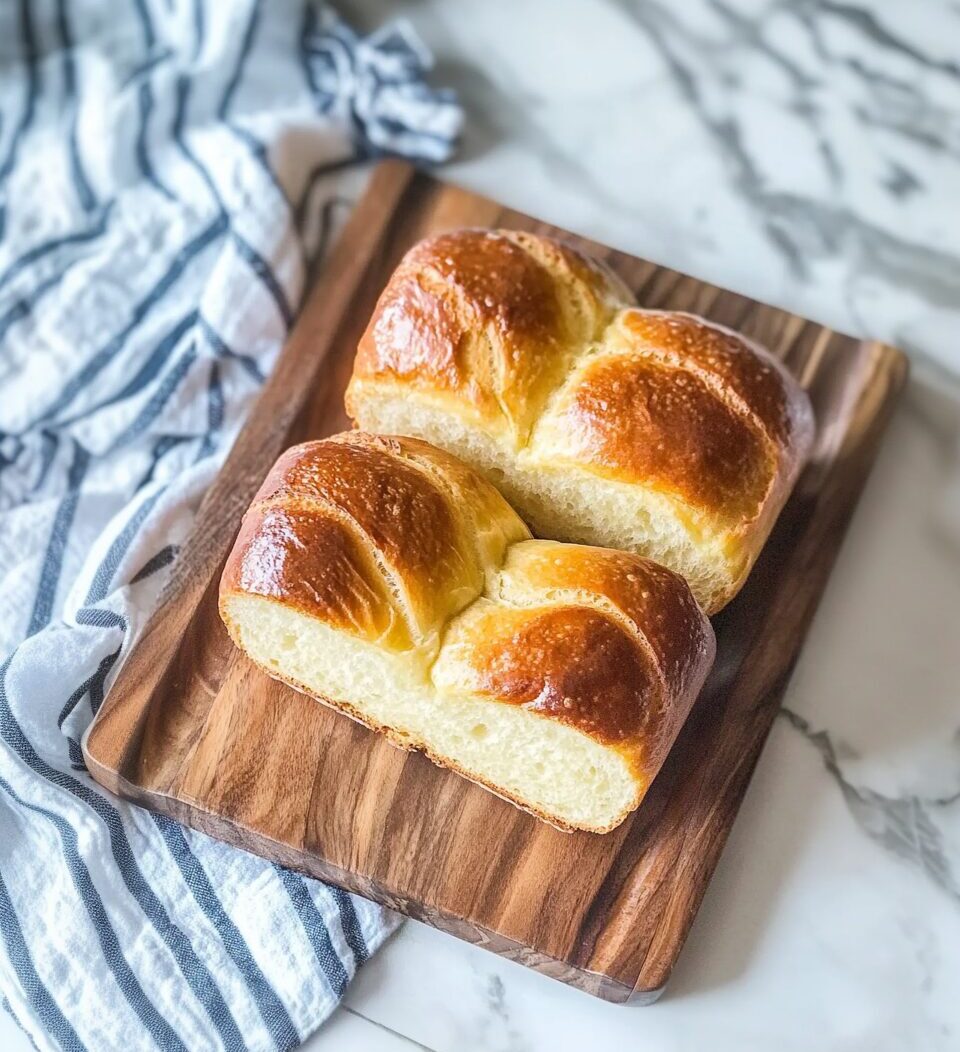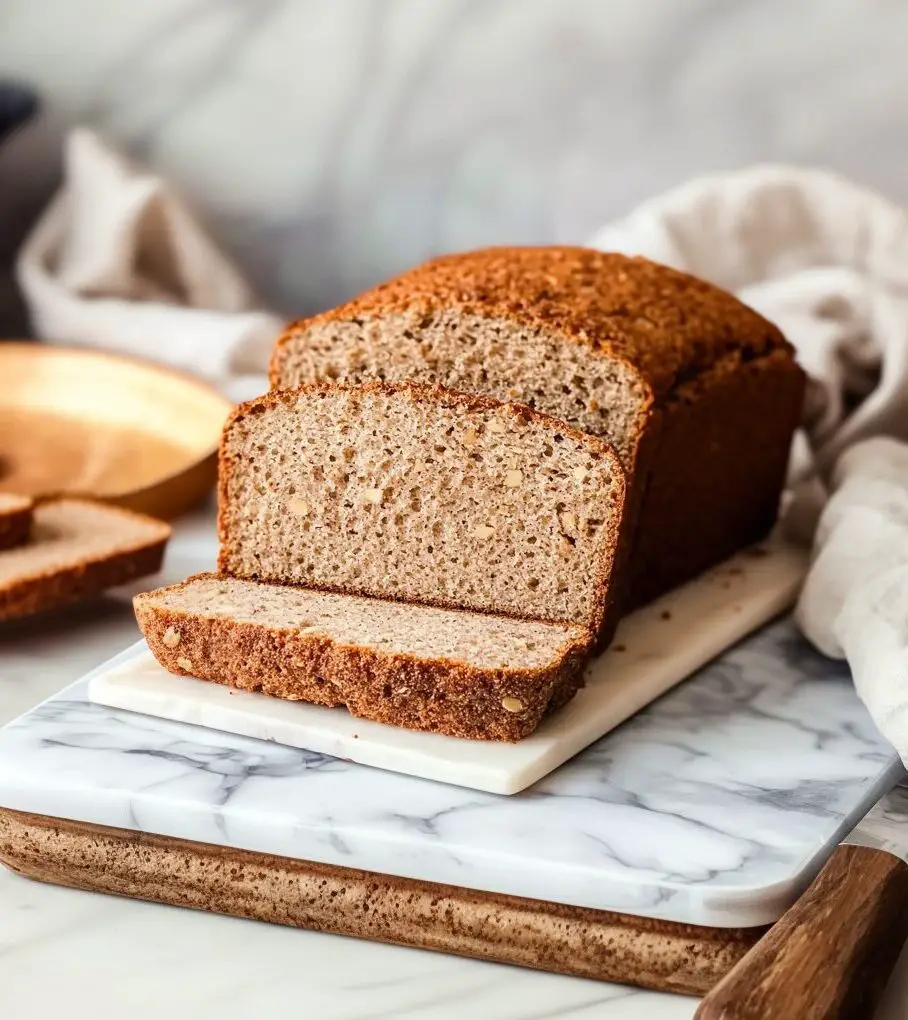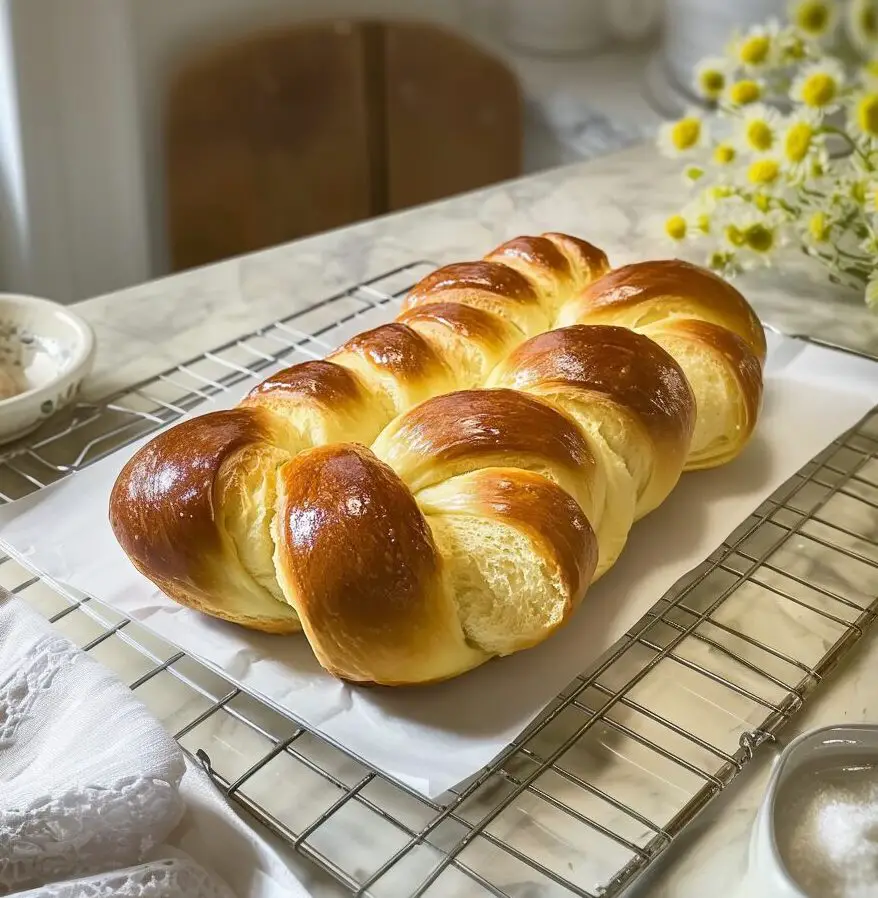Brioche is a classic French bread known for its rich, buttery flavor and soft, tender crumb. This versatile bread is perfect for a variety of uses, from sandwiches and French toast to enjoying on its own. The recipe yields two loaves, making it ideal for sharing or freezing for later use.
Full Recipe:
Ingredients
- 500 g bread flour
- 10 g instant yeast
- 50 g granulated sugar
- 10 g salt
- 6 large eggs
- 250 g unsalted butter, softened
- Egg wash (1 egg beaten with 1 tbsp water)
Directions
- In the bowl of a stand mixer fitted with a dough hook, combine bread flour, instant yeast, sugar, and salt.
- Add eggs to the dry ingredients and mix on low speed until a dough forms.
- Increase the mixer speed to medium and knead the dough for about 10 minutes until it becomes smooth and elastic.
- Gradually add the softened butter, a few pieces at a time, allowing each addition to incorporate fully before adding the next.
- Once all the butter is incorporated, continue kneading the dough for another 10-15 minutes until it is glossy and elastic.
- Transfer the dough to a lightly greased bowl, cover with plastic wrap, and let it rise at room temperature until doubled in size, about 1-2 hours.
- Punch down the dough to release the air, cover, and refrigerate overnight to allow the flavors to develop.
- The next day, divide the chilled dough into two equal portions. Shape each portion into a loaf and place them into greased loaf pans.
- Cover the pans loosely with plastic wrap and let the dough rise at room temperature until it reaches the top of the pans, about 1-2 hours.
- Preheat the oven to 350°F (175°C). Brush the tops of the loaves with the egg wash.
- Bake the loaves for 30-35 minutes, or until they are golden brown and sound hollow when tapped.
- Remove the loaves from the pans and let them cool on a wire rack before slicing.
Nutritional Facts (per slice, based on 16 slices per loaf)
- Calories: 200 kcal
- Carbohydrates: 22g
- Protein: 5g
- Fat: 10g
- Saturated Fat: 6g
- Cholesterol: 70mg
- Sodium: 200mg
- Sugar: 4g
The Art of Brioche Baking
Baking brioche is both a challenge and a delight. While it requires patience and attention to detail, the end result is undeniably rewarding. The process involves mixing a rich dough made with eggs, butter, and flour, kneading it to develop the structure, and allowing it to rise multiple times before baking. These steps, combined with the right technique and ingredients, result in a loaf that is soft, fluffy, and packed with buttery goodness.
The key to a successful brioche lies in the careful balance of butter, eggs, and flour. Unlike traditional breads, which rely on basic flour, water, yeast, and salt, brioche contains an abundance of butter, which gives it its distinctive richness and slightly sweet flavor. The high egg content also contributes to the dough’s richness and its beautiful golden hue when baked. This combination of ingredients creates a bread that is tender and moist with a delicate crumb.
Brioche’s Rich History
Brioche has a long and storied history that dates back to France in the 16th century. It is believed to have originated in the region of Normandy, where it was traditionally made as a festive bread for special occasions. The French word “brioche” comes from the Old French word “brier,” meaning “to knead.” In its early form, brioche was a simple round loaf, but over the centuries, it evolved into the sweeter, richer version that we recognize today.
Throughout history, brioche has been associated with luxury and refinement. Its rich ingredients made it a bread of the aristocracy, often reserved for celebrations and special feasts. During the French Revolution, the famous phrase attributed to Marie Antoinette, “Let them eat cake,” is thought by some to refer to the extravagant nature of brioche. However, historians debate whether she ever actually uttered these words, but they have become synonymous with the lavish, indulgent qualities of brioche.
Why Brioche is So Special
What sets brioche apart from other types of bread is its unique texture and flavor. Unlike regular bread, which is often firm and chewy, brioche is soft, airy, and slightly sweet. The dough is rich with butter, which gives it a soft, melt-in-your-mouth texture. The eggs not only enhance the richness but also contribute to the bread’s beautiful golden color. When baked, brioche forms a delicate, crumbly crust, which contrasts beautifully with the pillowy interior.
The flavor profile of brioche is also distinct. While it is subtly sweet, it’s not overwhelmingly sugary. The balance of butter and eggs creates a rich, savory flavor that makes it perfect for both sweet and savory applications. Whether you top it with a dollop of honey or use it to make a savory sandwich, brioche’s flavor complements a wide range of fillings and spreads.
The Science Behind Brioche’s Texture
Brioche’s signature texture comes from its high fat content, which prevents the gluten strands from fully developing. The addition of butter, eggs, and sometimes milk creates a soft and tender dough that lacks the firmness typical of traditional bread. The rich dough requires more time to knead and proof, allowing the flavors to develop and the dough to rise properly. The slow process of rising and resting helps create the light, fluffy texture that brioche is known for.
The yeast in brioche is also a critical component. It helps the dough rise and develop its airy texture, creating the characteristic pockets of air within the crumb. However, because the dough is so rich and dense, it requires a longer rising time than many other breads. Some bakers even recommend refrigerating the dough overnight, allowing it to ferment slowly and develop deeper flavors.
Uses for Brioche Bread
Brioche’s versatility makes it ideal for a wide variety of uses. It can be enjoyed fresh, toasted, or used as the base for a variety of dishes. Here are a few popular ways to incorporate brioche into your meals:
-
Breakfast: Brioche is often served as part of a decadent breakfast. It’s perfect for French toast, as the bread soaks up the egg and milk mixture, creating a rich and custardy interior with a golden, crispy crust. Brioche also makes an excellent toast when spread with butter, jam, or honey, adding a touch of indulgence to your morning routine.
-
Sandwiches: Brioche makes an ideal base for gourmet sandwiches. Its softness and slight sweetness pair well with both savory and sweet fillings. From a classic bacon, egg, and cheese breakfast sandwich to a rich hamburger bun, brioche adds a delicious, buttery flavor to any sandwich.
-
Desserts: The richness of brioche makes it a fantastic ingredient in many dessert recipes. It can be used to make bread pudding, a popular dessert that takes advantage of brioche’s ability to soak up custard. Brioche can also be used to make delicious pastries, like sticky buns or cinnamon rolls, where its softness and flavor shine through.
-
Snacks: For a quick snack, brioche can be served warm, simply buttered, or with a sprinkle of sugar. Its rich, buttery flavor makes it a comforting treat on its own.
The Versatility of Brioche: Variations and Customization
While traditional brioche is made with just flour, butter, eggs, sugar, and yeast, there are many variations that can be made depending on personal preferences. Adding chocolate chips, dried fruit, or nuts to the dough can create an even more indulgent version of brioche. Some bakers also experiment with flavored liquids, such as vanilla or orange zest, to infuse the dough with extra flavor.
The Importance of Resting and Proofing
One of the most important aspects of making brioche is allowing the dough to rest and proof properly. Brioche dough is high in fat, which makes it more difficult for the yeast to rise quickly. Therefore, it’s essential to give the dough enough time to rest between each stage of the process. After mixing and kneading, the dough should be left to rise until doubled in size. This slow fermentation process allows the flavors to develop and helps create the light, airy texture of brioche.
Conclusion
Brioche bread is a true culinary delight that brings both richness and versatility to the world of baking. Its soft, buttery texture and subtly sweet flavor make it a perfect choice for a wide range of dishes, from breakfast treats to gourmet sandwiches. While making brioche requires patience and attention to detail, the end result is worth every bit of effort.








